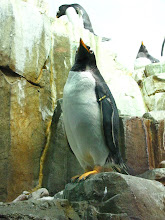There are of course drawbacks to the concept of floating communities. There is no guarantee that this system will be void of problems, even catastrophic ones. What, for instance, will happen if such a floating community is subject to the forces of a hurricane? How will people adapt to continually being upon a moving surface, and if the surface is not moving, but rather anchored into the seabed, such as with offshore oil-rigs, what will the environmental impacts of such a construct be? As the size of communities grows, issues related to aquatic mammals and photosynthesizing creatures will present themselves. Whales attempting to breach while beneath community vessels may not be able to do so depending on the vessel construction. Also the shadow created by such large vessels (potentially spreading many tens of kilometers across the water) will likely have disastrous effects on the photosynthesizing organisms beneath the vessels. The lack of such organisms would then influence other creatures along the food chain, and serious, negative impacts may be incurred. These problems, along with many others will need to be addressed before a floating community concept is accepted.
However, the potential benefits of creating an effecient water based communty, relieving the pressure on land development and so the natural environment cannot be ignored. While land demand grows alongside the ever increasing population, societies will likely soon begin to consider the oceans as a possible avenue for expansion. What remains to be seen is whether or not such a proposal is in fact viable, and if so, how people will react to such an challenge.
Subscribe to:
Post Comments (Atom)

No comments:
Post a Comment